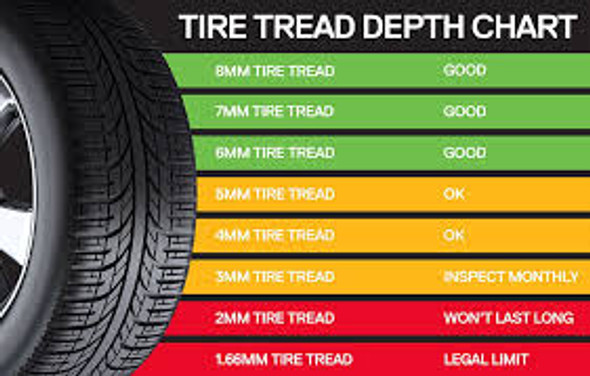Tire Tread Depth: Why it Matters and Simple Ways to Measure it
When was the last time you checked your tire tread depth? If you’re unsure, you’re not alone—but this small detail plays a huge role in road safety. Your tires are your car's first line of defense against slippery roads, sudden stops, and unexpected weather. Adequate tire tread depth ensures traction, grip, and braking performance. Ignoring it could lead to accidents, fines, or costly repairs.
In this blog, we’ll break down why tire tread depth matters, how to measure it, and tips for extending the life of your tires. Let’s dive in to keep your family safe and your vehicle running smoothly.
The Role Of Tire Tread in Safety
Traction and Grip on the Road
Tire treads are specifically engineered to grip the road, especially during challenging conditions. Deep tread depth allows your tires to channel water away, reducing the risk of hydroplaning during rainstorms. Additionally, good tread ensures your car stops efficiently, particularly in emergencies.
Weather Adaptability
From summer heat to icy winter roads, the right tread depth helps your tires adapt to different conditions. All-season tires rely on moderate tread depth to perform across various weather scenarios, while winter tires depend on deeper treads to grip icy roads effectively.
Regulatory and Legal Standards
In the U.S., the legal minimum for tire tread depth is 2/32 of an inch, but many experts recommend replacing tires at 4/32 for better safety. Driving on bald or overly worn tires could lead to failed inspections, fines, or worse—accidents.
The Risk of Worn Tire Treads
Increased Risk of Accidents
Statistics show that poorly maintained tires contribute to thousands of accidents annually. Worn treads drastically reduce your car's ability to stop, especially in wet conditions, where braking distances can increase by over 50%.
Decreased Fuel Efficiency
Tires with shallow treads create greater rolling resistance, forcing your engine to work harder. This means you’ll spend more money on fuel—something every driver wants to avoid.
Accelerated Tire Wear
Uneven or shallow tread depth causes tires to wear out faster, leading to frequent replacements. Regular inspections help detect problems early, saving you money in the long run.
How to Measure Tire Tread Depth
The Penny Test
This is a simple test anyone can do at home. Take a penny and insert it into the tire groove with Lincoln's head facing down. If you can see the top of Lincoln's head, your tire tread is below 2/32 of an inch, and it's time for a replacement. While this test is easy, it’s not the most precise.
Tire Tread Depth Gauges
For a more accurate measurement, use a tire tread depth gauge. These affordable tools are widely available at auto shops. Insert the gauge into the tread groove to get an exact reading in seconds.
Professional Inspections
Not confident in DIY methods? Mechanics and tire shops offer professional inspections, ensuring your tires meet legal and safety standards. This service is often free or included in routine maintenance.
Maintaining and Extending Tire Tread Life
Regular Tire Rotations
Rotating your tires every 5,000 to 7,500 miles ensures even wear across all four tires. Uneven wear leads to poor handling and faster tread depletion.
Maintaining Proper Tire Pressure
Under inflated tires wear out unevenly and negatively affect fuel efficiency. Check your tire pressure monthly and refer to your car’s manual for recommended levels.
Avoid Harsh Driving Habits
Sudden braking, aggressive acceleration, and sharp cornering can wear down tread quickly. Drive smoothly to preserve your tires and enhance fuel efficiency.
When to Replace Your Tires
Bald or Uneven Treads
If your tires have no visible grooves or exhibit uneven patterns, it's time for a replacement. Bald tires significantly increase the risk of skidding.
Cracks and Bulges
Visible cracks on the sidewalls or bulges in the tire are signs of structural damage. These issues compromise safety and demand immediate attention.
Frequent Air Leaks
If you're constantly refilling your tires, it could be sign of worn treads or internal damage. Replace them promptly to avoid blowouts.
Conclusion
Your tire tread depth is more than just a measurement—it’s a lifeline for safe driving. From maintaining traction on wet roads to improving fuel efficiency, well-maintained treads make all the difference. Regular checks, proper tire care, and timely replacements are key to ensuring you and your family stay safe on every journey.
Take the time today to inspect your tires or visit a professional for a free inspection. Don’t wait until it’s too late—because when it comes to road safety, every millimeter counts.

